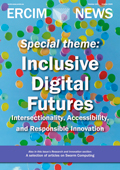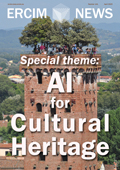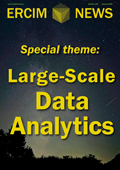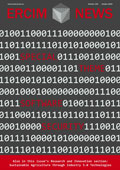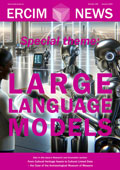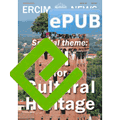by Federico Martusciello and Henry Muccini (University of L’Aquila - DISIM)
The rapid advancement of digital technologies is revolutionizing how we engage with Cultural Heritage (CH). MuNDAR is an ambitious project focused on the integration of Gamification (GAM), Generative Artificial Intelligence (GAI) and Augmented Reality (AR) to create immersive and personalised user journeys in mobile applications in the context of CH. By integrating these technologies, we aim to enhance user engagement, accessibility, and storytelling, offering a dynamic and interactive way to explore history and culture.
The Role of ICT in Cultural Heritage
In recent years, Information and Communication Technologies (ICT) have significantly transformed the CH sector, offering unprecedented opportunities to enhance visitor engagement and experiential value. Institutions worldwide are increasingly utilising digital tools to digitise and enrich their collections while seeking innovative methods to attract wider audiences.
The Department of Information Engineering, Computer Science, and Mathematics at the University of L'Aquila, in collaboration with the Department of Human Sciences and the Museo Nazionale d'Abruzzo (MUNDA), has developed an advanced research prototype integrating Gamification (GAM), Generative Artificial Intelligence (GAI), and Augmented Reality (AR) to redefine visitor experiences at key cultural sites in L'Aquila. Launched in 2023 and scheduled for completion in 2025, this initiative introduces a novel software architecture to facilitate interactive and immersive engagement with cultural heritage. Initial testing has demonstrated promising outcomes, emphasizing the potential of this approach.
The research team, with expertise spanning software architecture, digital humanities, and museology, has designed a reference software framework that seamlessly integrates GAM, GAI, and AR. This architecture ensures smooth interoperability between these technologies, providing visitors with an enriched and cohesive experience.
Architectural Framework and Technological Integration
The implemented system shown in Figure 1 is based on a multi-layered software architecture integrating the following core components:
- Gamification Engine: Enhances engagement by incorporating points, rewards, and challenges tailored to visitor behaviour and interests.
- AR: Provides real-time visualization of historical reconstructions and interactive elements through mobile applications.
- GAI: Generates context-aware, dynamic content, adjusting narratives, pathways, and explanations to suit different user profiles, ensuring accessibility and inclusivity.
- Integration Framework: A middleware layer that facilitates seamless interaction between AI-driven content, AR experiences, and gamified exploration paths.
This architecture allows for a scalable, modular approach, enabling future enhancements and broader applicability across various cultural heritage contexts.
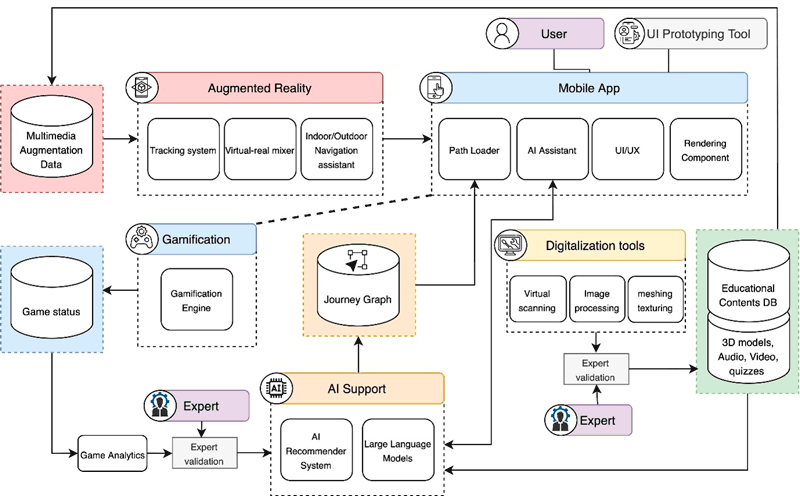
Figure 1: The Implemented architecture. The map is categorised into six distinct colours: digitalization tools by yellow, educational contents repository is represented by green, gamified elements by blue, actors by purple, AI by orange, augmented reality by red.
Gamification as a Tool for Cultural Engagement
Cultural heritage sites often face challenges in attracting and maintaining audience engagement. Gamification, defined as the application of game-design elements in non-gaming contexts, has been shown to be highly effective in fostering learning and active participation. By incorporating interactive mechanics such as rewards, quests, and challenges, cultural institutions can create more compelling experiences [1].
This project enhances museum visits through gamified storytelling and exploration. Focusing on three major locations—the MUNDA museum, the Amiternum archaeological site, and the 16th Century Castle of L'Aquila—the research seeks to highlight MUNDA’s extensive collections while increasing the visibility of lesser-visited archaeological sites. A digital treasure hunt has been implemented, where users progress by discovering points of interest (POI) and engaging in educational mini-games and challenges linked to them.
Merging the Physical and Digital: The Phygital Approach
Traditional museum experiences often suffer from the decontextualisation of artifacts, as objects are displayed far from their original sites, detaching them from their historical narratives. This project addresses this issue through a “phygital” approach integrating physical and digital dimensions to contextualise artifacts within their original settings.
AR plays a crucial role in bridging this gap by enabling visitors to visualise historical objects in the locations where they were originally discovered [2]. When standing at an archaeological site, users can access AR-driven reconstructions, offering a real-time visual representation of how artifacts were once positioned. This approach not only enhances engagement but also deepens visitors' understanding of historical contexts by merging tangible and intangible heritage elements through storytelling and interactive digital content.
AI-Driven Personalization for Enhanced Cultural Exploration
Gamification mechanics alone are not sufficient to create highly personalised cultural journeys. GAI is leveraged within this project to enable adaptive content generation, decision-making support, and interactive user experiences [3]. AI-powered systems analyse visitor interactions, preferences, and prior knowledge to deliver tailored recommendations and dynamic storytelling elements.
Beyond static reconstructions, GAI creates dynamic narratives that evolve based on user input. Visitors receive customised pathways through cultural sites, with AI adapting content and pathways in real time. This ensures that each visitor's experience is uniquely relevant, enhancing engagement and learning outcomes.
The system also gathers continuous feedback from users, refining its adaptive mechanisms to align with their expectations and needs. By incorporating AI-driven personalization, the project ensures a high degree of relevance and accessibility, making cultural exploration more engaging for diverse audiences.
As shown in Figure 1, the GAI module utilises a recommender system, journey path creator, and Large Language Models (LLMs) to generate adaptive content and personalised visitor pathways. The selection of materials by experts is essential for maintaining content quality, as educational specialists curate and validate 3D models, audio, video, and quizzes stored in the educational content database. Additionally, fine-tuning of LLMs ensures that AI-generated content aligns with expert-approved historical and educational accuracy. This guarantees that AI-driven narratives and interactions remain reliable, contextually appropriate, and enriching for visitors.
Future Directions: Expanding the Digital Cultural Experience
The next phase of the project will focus on developing a fully operational system capable of generating complex, real-time personalised visitor journeys without the supervision of a path validation expert. By refining user profiling methodologies and interactive behaviour analysis, the system will dynamically tailor content and routes to match individual visitor interests.
Future efforts will emphasise:
- Enhancing AI-driven content adaptation for improved narrative coherence and educational impact.
- Refining real-time analytics for better responsiveness to visitor interactions.
- Expanding collaborations with cultural institutions to scale the project’s impact.
By utilising cutting-edge digital tools, this initiative aims to set a new standard in cultural heritage engagement, transforming traditional museum experiences into dynamic, interactive explorations of history and culture.
References:
[1] C. Özgül and F. Erbay, “Gamification practices in museums,” Journal of Tourismology, vol. 7, no. 2, pp. 265–276, 2021. https://doi.org/10.26650/jot.2021.7.2.1017009
[2] Y. Zhou, J. Chen, and M. Wang, “A meta-analytic review on incorporating virtual and augmented reality in museum learning,” Educational Research Review, vol. 36, p. 100454, Jun. 2022. https://doi.org/10.1016/j.edurev.2022.100454
[3] M. Bugeja and E. M. Grech, “Using technology and gamification as a means of enhancing users’ experience at cultural heritage sites,” in Proceedings of the International Conference on Digital Cultural Heritage, D. Seychell and A. Dingli, Eds., 2020. https://doi.org/10.1007/978-3-030-36107-5_4
Please contact:
Federico Martusciello, University of L’Aquila (DISIM), Italy
Henry Muccini, University of L’Aquila (DISIM), Italy

